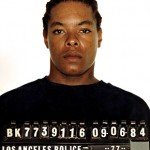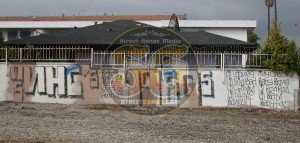Rollin 60s Neighbor Hood Crip in Los Angeles, California – Hyde Park area
Westside Rollin 60s NeighborHood Crip [RSC, R.60s, NH R.60s] are a predominately African-American street gang in the Hyde Park area of South Los Angeles, California. They are among one of the largest gangs geographically and numerically the several hundred Black gangs in Los Angeles County, California. They have been active since the mid-1970s after the the larger West Side Crips, which formed in 1971, began to splinter into more geographically specific neighborhood groups.
RSC are the first gang to use the term “Rollin” and were involved in the first Crip-on-Crip rivalry when in 1979, the RSC and Eight Tray Gangster Crips (ETG) began a feud that has lasted over 3 decades with about 50 deaths among the two gangs with nearly hundred including innocent bystanders.
RSC have of few subsets or clicks of the larger gang which include the Avenues, Overhills (Bacchood), The Dime and Front Hood.
Because of their enormous size in numbers, they have been able to dominate areas outside their traditional neighborhood. For example, during the 1980s, members of RSC would travel north across town to the World-on-Wheels skating rink located in rival School Yard Crip’s (SYC) neighborhood. Often times, the SYC could not do anything about their presence, and they would have to retreat south across Venice Blvd into their turf when large numbers of RSC members would visit the skating rink. At times, the SYCs would attempt drive-by shootings at RSC members hanging out in front, but every weekend they would return, provoking additional shootings, all this happening adjacent to the Wilshire Division of the Los Angeles Police Department.
Today, their main rival to the east continues to be the ETGs. This would be the most intense rivalry between any two Crip gangs in all of Los Angeles County in the history of street gangs conflict. Although there are longer rivalries among other Los Angeles gangs, such as the one between the White Fence and El Hoyo Maravilla, which goes back to about 1920, the conflict between RSC and ETG has been more violent, especially during the period between 1980 and 1995.
The RSC and ETG rivalry started Crip infighting which created a divide between Neighborhood Crips and Gangster Crips also known as Trays. This rivalry is discussed in Monster Kody’s 1993 book, Monster: Autobiography of an LA Gang Member and Donald Bakeer’s 1987 book, Crips.
Other rivals to the Rollin 60s include Inglewood Family Bloods to their south, Van Ness Gangsters Bloods to their east and Centinela Park Family Bloods to their west in the neighboring city of Inglewood.
 A Rollin 60s Crip member made news headlines in 1984 when member Tiequon Aundray “Lil Fee” Cox, 18, (b. 1966) sought revenge against a person in a non-gang related matter, and went to the wrong house where he and two accomplices (Horace Burns and Darren “C-Dub” Williams) executed four family members of former NFL Rams player Kermit Alexander. Cox was convicted in 1986 for committing quadruple murder and was sentenced to death and sits on San Quentin’s death row. Williams too was sentenced to death but then had his sentenced commuted to 4 consecutive life terms (100 years) while Burns was sentenced to life without parole.
A Rollin 60s Crip member made news headlines in 1984 when member Tiequon Aundray “Lil Fee” Cox, 18, (b. 1966) sought revenge against a person in a non-gang related matter, and went to the wrong house where he and two accomplices (Horace Burns and Darren “C-Dub” Williams) executed four family members of former NFL Rams player Kermit Alexander. Cox was convicted in 1986 for committing quadruple murder and was sentenced to death and sits on San Quentin’s death row. Williams too was sentenced to death but then had his sentenced commuted to 4 consecutive life terms (100 years) while Burns was sentenced to life without parole.
While on death row, Cox, 23, stabbed original West Side Crip co-founderStanley “Tookie” Williams, 35, on one of the 6-mini yards at San Quentin in 1988 and has since assumed a dominant position at San Quentin on that yard, often referred to as the “Crip Yard.” This act was depicted in the 2004 filmRedemption starring Jamie Foxx but many suggested that the incident didn’t play out as it did in the film.
In 1988, Rollin’ 60s Crip member, Durrell Dewitt Collins, 21, was arrested for the shooting death of Westwood patron Karen Toshima, 27. According to court documents, Collins was attempting to shoot a rival Mansfield Gangster Cripmember, Tyrone Swain, when Toshima was accidentally struck. Although street gang conflict among blacks was on the rise since the early 1970s, it was the killing of Toshima that bought national attention to the 1980s gang conflict of Los Angeles. Gang related murders were occurring at the rate of nearly 2 per day with many innocent bystanders, but this type of violence would not be tolerated in the affluent Westwood community of Los Angeles of a non-black victim.


No comments:
Post a Comment